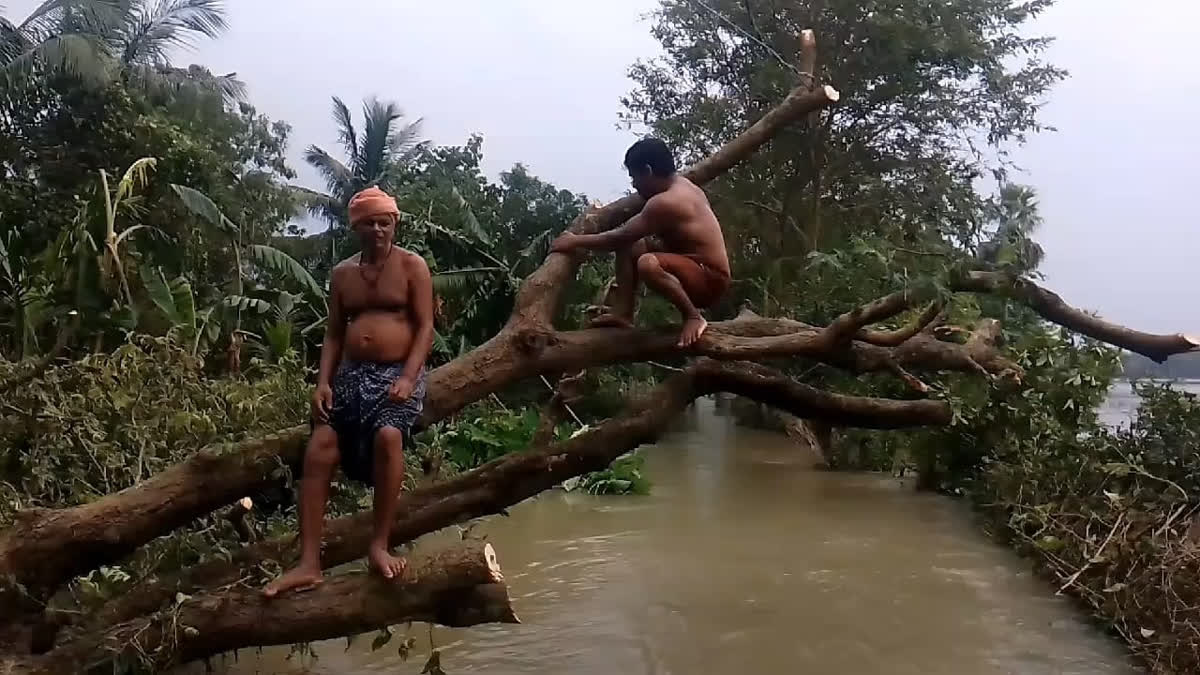Bhubaneswar/Balasore: Following the devastating storm that struck coastal Odisha, the impact has been most severe in five blocks, particularly within the Balasore district. District authorities have begun a thorough assessment of the damage, but many regions, including Soro and Khaira blocks, remain without electricity. In the aftermath, residents in low-lying areas struggle as floodwaters have engulfed entire villages under Baranagar Panchayat - Sunari, Astabanka, Salampur, Ankurkharji, ChauliSabira, Padanpada, Rahania, Dihi Sabira, Bilsabira, and Brahman Sabira under water. This waterlogging has resulted from the rising Kansabansa River. However, from Monday morning, flood waters have started receding.
Discussing the restoration work, District Magistrate Suryavanshi Mayur Vikas said, “Recovery efforts are underway in the five worst-hit blocks. We’ve cleared fallen trees and debris from main roads, and water drainage is in progress.” He added that teams from various blocks have been mobilized to expedite recovery, with the goal of completing major rehabilitation tasks by November 2.
To address the immediate needs of affected residents, authorities have prioritized essential services for livestock, distributing fodder where needed. Free kitchen services are now limited to the most impacted zones as people gradually return to their homes. Floodwaters are also receding in surrounding districts as rainfall decreases, the collector added.
Support teams, including ODRAF, NDRF, and fire department personnel, are actively engaged in relief and restoration efforts, ensuring that even the most remote and flood-stricken communities receive necessary services and support.
After an aerial survey on Sunday, Chief Minister Mohan Charan Majhi announced that 92% of homes affected by Cyclone Dana have had their power restored. However, post-cyclone flooding has created a new crisis, particularly in Balasore and Mayurbhanj districts, where rising waters in the Budhabalanga River have forced the relocation of residents. To manage the flood threat, 21 additional power boats have been deployed to these districts.
Majhi had said that 10,500 residents of Balasore have been moved to safer areas. “With continued cooperation, we are handling the situation effectively,” he assured, noting that electricity is expected to be fully restored by Sunday night.
The CM is also likely to go on an aerial visit to the flood affected areas on Monday.
In Balasore district, standing crops in almost all areas have been wiped off putting farmers in a quandary. Naik said, “Thanks to cooperative efforts, the situation is under control with no accidents reported. Electricity restoration is underway, and waterlogged areas are being monitored. Residents with damaged homes are urged to report within seven days to receive assistance. Road repairs will also be prioritized.”
